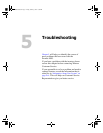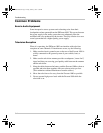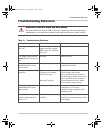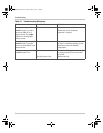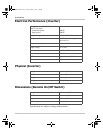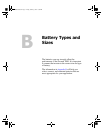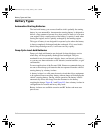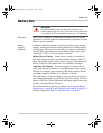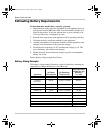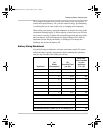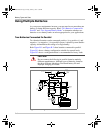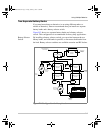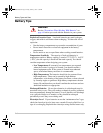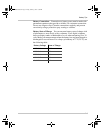
Battery Types and Sizes
B–2
Battery Types
Automotive Starting Batteries
The lead-acid battery you are most familiar with is probably the starting
battery in your automobile. An automotive starting battery is designed to
deliver a large amount of current for a short period of time (so it can start
your engine). Only a small portion of the battery’s capacity is used when
starting the engine, and it is quickly recharged by the running engine.
This type of battery is not designed for repeated cycles where the battery
is almost completely discharged and then recharged. If it is used in this
kind of deep discharge service, it will wear out very rapidly.
Deep-Cycle Lead-Acid Batteries
Deep-cycle lead-acid batteries are designed for deep discharge service
where they will be repeatedly discharged and recharged. They are
marketed for use in recreational vehicles, boats, and electric golf carts—
so you may see them referred to as RV batteries, marine batteries, or golf
cart batteries.
For most applications of the Prowatt 1000, Xantrex recommends that you
use one or more deep-cycle batteries that are separated from the vehicle’s
starting battery by a battery isolator.
A battery isolator is a solid-state electronic circuit that allows equipment
to be operated from an auxiliary battery without danger of discharging the
vehicle’s starting battery. During vehicle operation, the battery isolator
automatically directs the charge from the alternator to the battery
requiring the charge. Figure B-1 and Figure B-2 show a battery isolator in
configurations for normal and heavy-duty loads.
Battery isolators are available at marine and RV dealers and most auto
parts stores.
PROWatt100.book Page 2 Friday, January 5, 2001 3:03 PM




